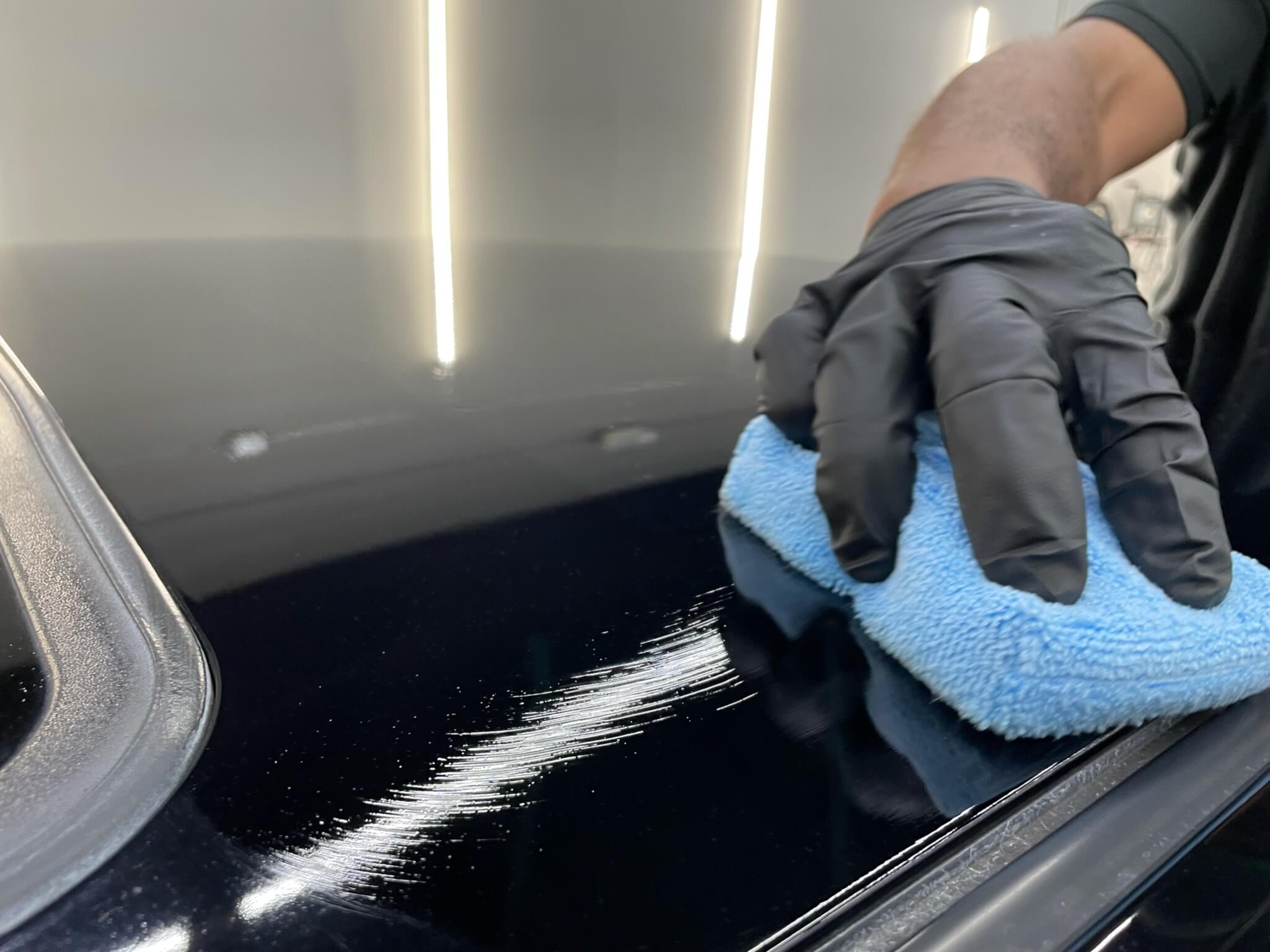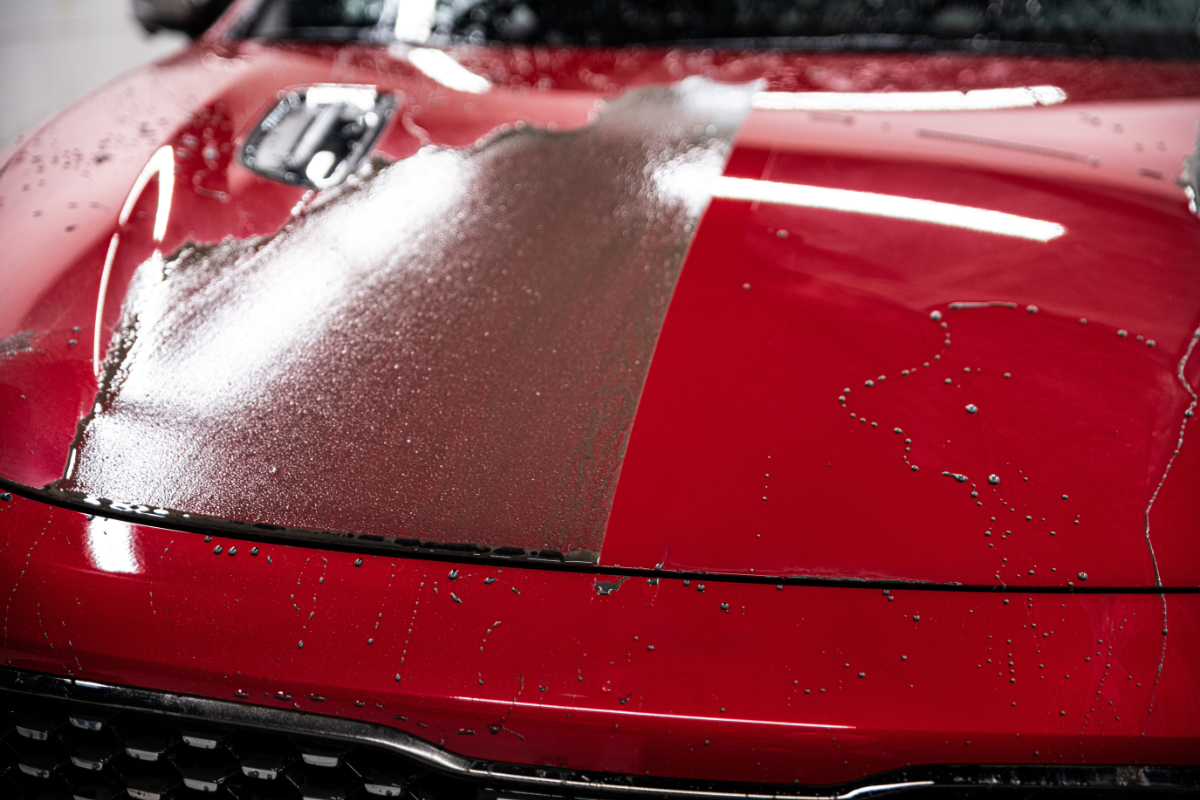Blessed Touches Detailing Ceramic Coating: Perfect for Any Type Of Automobile Defense Demand
Blessed Touches Detailing Ceramic Coating: Perfect for Any Type Of Automobile Defense Demand
Blog Article
Unlock the Benefits of Ceramic Coating for Ultimate Lorry Defense
Ceramic layer stands for a substantial advancement in car protection, supplying a resilient barrier against numerous environmental risks. Recognizing the science behind ceramic coverings and their application process is vital for any automobile proprietor seeking to optimize their investment.
What Is Ceramic Covering?
Ceramic layer, in essence, is a liquid polymer applied to the external surface areas of vehicles to give a resilient protective layer. This sophisticated modern technology provides a resilient shield against various environmental impurities, including UV rays, dust, road crud, and chemical spots. Unlike conventional wax or sealers that need frequent reapplication, ceramic finishings bond with the vehicle's paint, developing a semi-permanent layer that boosts the general resilience of the surface area.
The solution of ceramic layers normally includes silicon dioxide (SiO2), which contributes to its high resistance to abrasion and chemical damages (Blessed Touches Detailing Ceramic Coating). This safety layer not just boosts the aesthetic allure of the vehicle by providing a glossy surface yet also simplifies maintenance. With ceramic coverings, washing the lorry becomes more efficient, as pollutants are much less most likely to comply with the surface area
Additionally, the application of ceramic layers can considerably improve the vehicle's resale worth. A properly maintained outside safeguarded by ceramic finishing is commonly extra enticing to prospective customers, as it mirrors a commitment to vehicle treatment. In general, ceramic finishing stands for a substantial innovation in vehicle defense, offering robust advantages for cars and truck lovers and daily chauffeurs alike.
Just How Ceramic Finish Functions
The effectiveness of ceramic finishing exists in its advanced chemical make-up and application process. This protective layer is largely composed of silica dioxide (SiO2), which creates a strong covalent bond with the automobile's paint surface area. When used, the finish undergoes a chemical response that develops a long lasting, hydrophobic layer, boosting the surface's natural safety properties.

When cured, the ceramic layer acts as an obstacle against ecological contaminants such as UV rays, dirt, chemicals, and oxidation. Its hydrophobic nature makes water grain and roll off the surface, which not only assists keep the lorry tidy yet likewise decreases the threat of spots and etching. In general, the ins and outs of the chemical composition and the accuracy of the application process are essential to the exceptional efficiency of ceramic coatings in lorry defense.
Key Benefits of Ceramic Coating
A significant advantage of ceramic finish is its capacity to offer resilient security for a car's exterior. Unlike traditional wax or sealants, which may last just a couple of months, ceramic finishes can endure for a number of years, creating a durable shield versus ecological contaminants. This longevity substantially lowers the frequency of reapplication, therefore saving money and time in the long run.
Furthermore, ceramic coatings enhance the automobile's look by imparting a high-gloss finish that enhances the paint color. This hydrophobic property not only pushes back water but likewise helps in stopping dust and crud from sticking to the surface area, making cleansing much easier and more reliable.
Another trick advantage is the security against UV rays, which can cause paint oxidation and fading gradually. Ceramic layers serve as an obstacle, maintaining the original look of the automobile for a prolonged period. They give resistance against chemical discolorations from pollutants such as bird droppings, tree sap, and roadway salt, ensuring that the vehicle stays useful content in beautiful problem.
Application Process Described
Accomplishing ideal results with ceramic finish requires a precise application procedure that makes sure proper bonding and insurance coverage. The initial action involves completely cleansing the vehicle's surface. This includes washing, decontaminating, and drying to eliminate any kind of dirt, gunk, or previous wax deposits that can hinder attachment.

After making sure the surface is remarkable, the ceramic covering can be applied. This is commonly performed in a regulated environment to stop contamination from dust or particles. Using a soft applicator, the finish is spread uniformly across the surface area in areas, enabling extensive insurance coverage. It's important to comply with the maker's instructions pertaining to curing layers and times, as some finishings call for several layers for maximum defense.
Upkeep Tips for Durability
To make sure the longevity of your ceramic finishing, routine upkeep is important. Avoid extreme cleaning agents as they can degrade the covering.
After washing, think about using a spray sealant made for ceramic finishes. This will improve the hydrophobic residential or commercial properties and expand the life of your covering. In addition, ensure that you completely dry your automobile completely with a deluxe microfiber towel, as water spots can moved here create if left to air dry.
It is likewise crucial to prevent automated car cleans, particularly those with brushes, as they may harm the finish. Instead, go with touchless cleans or hand cleans.
Examine your finishing periodically for any type of indicators of degradation. Take into consideration an upkeep polish or a professional information to revitalize the finish. if you discover a decline in hydrophobicity. Blessed Touches Detailing Ceramic Coating.
Last but not least, keep your lorry parked in a shaded location or utilize a cars and truck cover when not being used to safeguard it from UV damages. Following these upkeep pointers will certainly guarantee your ceramic covering offers optimum protection for many years ahead.

Verdict
To conclude, ceramic finishing uses considerable advantages for vehicle protection and aesthetic appeals. Its innovative formulation gives a powerful defense versus UV rays, dirt, and chemical spots while improving the automobile's glossy look. The hydrophobic homes promote simplicity of maintenance, guaranteeing that lorries continue to be aesthetically appealing in time. By carrying out ceramic coating, lorry owners can properly protect their investment and expand the durability of their automobiles in the face of environmental obstacles.
Ceramic coating, in significance, is a liquid polymer used to the external surfaces of lorries to offer a resilient safety layer. Unlike standard wax or sealers that call for frequent reapplication, ceramic finishes bond with the car's paint, developing a semi-permanent layer that boosts the general sturdiness of the surface area.
With ceramic coatings, cleaning the car becomes more effective, as pollutants are much less likely to adhere visit our website to the surface.
Overall, the intricacies of the chemical structure and the accuracy of the application procedure are crucial to the amazing efficiency of ceramic coverings in vehicle protection.
A noteworthy advantage of ceramic layer is its capacity to provide lasting security for a vehicle's exterior.
Report this page